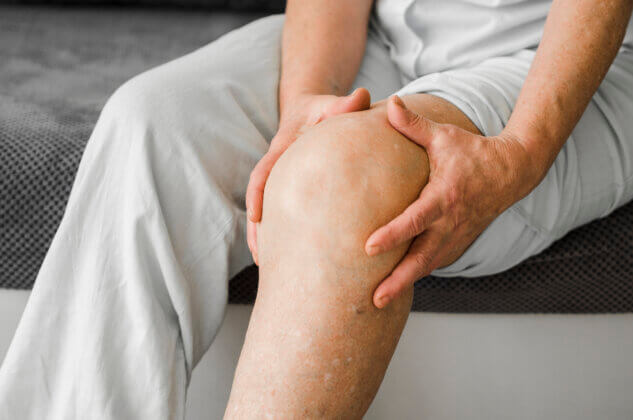
1 September 2023
September is Vascular Disease Awareness Month. The Circulation Foundation are supporting a campaign to highlight and promote awareness for vascular disease to the general public.
What is Vascular disease?
The Circulation Foundation describes this as being “the collective term for diseases of the arteries, veins and lymphatics”. ( The lymphatic system is part of the immune system. It keeps body fluid levels in balance and defends the body against infections). “Every part of the body to which blood flows can be affected by it. It’s as common as cancer and heart disease and accounts for 40% of deaths in the UK, many of which are preventable”.
It includes any condition that affects your circulatory system and can come in different forms, such as:
- Peripheral Vascular disease / peripheral arterial disease (PAD) which is the most common variation of vascular disease. It is a slow and progressive circulation disorder, which involves narrowing, blockage, and a build-up of fatty deposits in the arteries restricting blood supply to leg muscles.
- Aneurysmal disease is a bulge in a blood vessel caused by a weakness in the blood vessel wall, usually where it branches. This could, for example, be in the abdomen, related to the aorta which runs from the heart. As blood passes through the weakened blood vessel, the blood pressure causes a small area to bulge outwards like a balloon.
- Carotid disease is a narrowing or blockage of the artery in the neck, which supplies blood to the large front part of the brain, which in turn controls thought, speech, personality and sensory and motor functions. When blood flow to the brain is blocked, it can result in a transient ischaemic attack (TIA) or stroke; more than half of strokes are caused by carotid artery disease.
- Other forms include venous thrombosis, pulmonary embolism, stroke and leg ulcers.
Who is at risk for Vascular disease?
Risk factors include:
- Smoking;
- Diabetes;
- High blood pressure;
- High cholesterol;
- Age (especially over 50);
- History of heart disease;
- Male gender;
- Postmenopausal women; and
- Family history of high cholesterol, high blood pressure or peripheral vascular disease.
According to Dr Bryan Power, Clinical Lead for Long Term Conditions for NHS Leeds Clinical Commissioning Group (CCG), “Vascular disease greatly increases the risk of having angina, a heart attack or stroke so it’s important to try to prevent it. Treatment focuses on managing disease and preventing complications, but there are things people can do to help themselves.
Chief among these is stopping smoking, maintaining a healthy weight through a varied diet, and exercising.”
Symptoms of Vascular disease
The symptoms will differ, depending upon the type of vascular disease. For peripheral arterial disease (PAD), which is the most common form of vascular disease, the most common symptoms are:
- The pulse in your leg being very weak or undetectable;
- Painful ache in the legs when walking or exercising, which usually goes away after a few minutes of rest – not everyone with PAD will experience pain and the pain can range from mild to severe;
- Hair loss on legs and feet;
- Numbness or weakness in the legs;
- Ulcers on feet and legs which do not heal;
- Brittle, slow growing toenails;
- Shiny skin or a change in skin colour on feet and legs, such as the skin becoming paler;
- The muscles in your legs shrinking/wasting;
- In men, erectile dysfunction
It is recommended that you see your GP, if you suffer from any of the above symptoms so that they can be investigated, particularly if the symptoms have developed quickly or get suddenly much worse.
For more information on other vascular diseases and the common symptoms, please visit: https://www.circulationfoundation.org.uk/
Treating PAD
There is no cure for peripheral arterial disease; however, symptoms can be managed with a healthy lifestyle, as well as medication. Such management can also help reduce your risk of developing types of cardiovascular disease such as coronary heart disease. Lifestyle changes such as regular exercise, stopping smoking, having a healthy diet, losing weight if you have been considered overweight, can all help. Your doctor will also look at the underlying cause which should also be treated, such as high blood pressure, high cholesterol and diabetes.
In some cases surgery can be used to improve the blood flow to the legs, should there be a blockage affecting circulation. If such treatment is unsuccessful and circulation is not able to be adequately restored, there is a risk of serious complications, including critical leg ischaemia (CLI). CLI is extremely serious and if not successfully treated, it can lead to amputation of the leg.
Symptoms of CLI can be similar to those of PAD but the key differences include:
- a severe, burning pain in your legs and feet, which continues, even when resting;
- the skin on your toes or lower limbs becoming cold and numb, turning red and then black, and/or beginning to swell and producing smelly pus, causing severe pain (gangrene)
Failure to recognise serious symptoms or take action to carry out diagnostic testing can have serious implications. A delay in diagnosis can lead to delays with treatment which in turn can allow the condition to deteriorate with a risk of life changing complications. If you believe that you or a loved one have experienced such delays in diagnosis or treatment, please contact our experienced medical negligence department to discuss how they can assist you on (01482) 323697.


